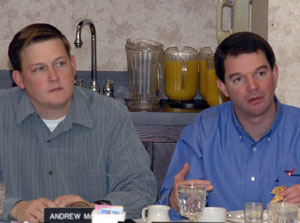 Iowa Corn just picked Morgan & Myers to handle their account from their Waterloo office. They’ll be taking care of membership retention; government, research and business development; and market development, which includes ethanol. Iowa Corn is the Iowa Corn Promotion Board and Iowa Corn Growers Association.
Iowa Corn just picked Morgan & Myers to handle their account from their Waterloo office. They’ll be taking care of membership retention; government, research and business development; and market development, which includes ethanol. Iowa Corn is the Iowa Corn Promotion Board and Iowa Corn Growers Association.
“Iowa Corn is excited to be working with Morgan&Myers,” says Mindy Williamson, Iowa Corn director of communications and public relations. “Their industry knowledge speaks for itself. Morgan&Myers has the staffing and the reputation to work with consumer audiences and traditional agricultural markets. We’ve hit the road running and look forward to what we can accomplish in the future.”
According to Morgan&Myers’ Janine Whipps, a partner and leader of the agency’s integrated marketing communications practice area, “We’re thrilled to be partnering with Iowa Corn during a time when so much is happening on the corn new usage front, with ethanol and E85 leading the way.”


 Here’s the newest recording sensation for the serious farm podcaster. The
Here’s the newest recording sensation for the serious farm podcaster. The  These Canadian guys are ahead of the curve when it comes to blogging and podcasting. One of them is Wayne Hurlbert,
These Canadian guys are ahead of the curve when it comes to blogging and podcasting. One of them is Wayne Hurlbert, 
 Just in time for the holidays,
Just in time for the holidays,  The
The  One of the first people I found when I got started blogging was Wayne Hurlbert,
One of the first people I found when I got started blogging was Wayne Hurlbert,  One of our advertisers is
One of our advertisers is 
 I heard from Doug Ballou today and guess I just missed the announcement for his new company, WHITWORTH X BALLOU. I wish him the best of luck and look forward to hearing more about how things are going.
I heard from Doug Ballou today and guess I just missed the announcement for his new company, WHITWORTH X BALLOU. I wish him the best of luck and look forward to hearing more about how things are going.